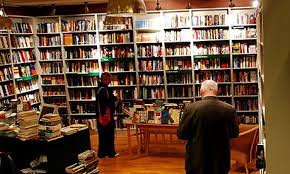Is Amazon Prime day good for publishers?
15 July 2015 by Catherine Holdsworth in Book publishing, Business and finance
Today, to mark the twentieth birthday of a small company that you might have heard of, called Amazon, the web retailer is launching its first ever Amazon Prime Day. In order to induce customers to sign up to the £79 a year service, benefits of which include free delivery on purchases and access to Amazon’s TV streaming service, they are being given exclusive offers in a promotion that Amazon claims has ‘more deals than Black Friday’. It all sounds like a pretty sweet deal from Amazon, which claims to be the ‘customer-centric company’.
But what does this all mean for the publishing industry? It may look great from a consumer point of view, with its exclusive free ebooks and highly discounted books (in much the same way that a worm on a hook looks great to a trout). Amazon is pushing the products at customers at prices that are incredibly attractive. But if it looks too good to be true then it might be worth taking time to think about just how Amazon is managing to make these offers. Take, for example, the summer read that everyone’s talking about, The Girl on the Train, which is selling on Amazon for £6, less than half of the RRP (£12.99). The Amazon price is much lower than that of the average paperback book in your local book shop, and no doubt when it is released in paperback, Amazon will reduce it further. How is Amazon making money on this product, and more importantly, how is the publisher?
Well it’s unlikely that Amazon is making much, if any, money on the discounted products. By heavily discounting books like this one and Go Set a Watchman, Amazon is creating loss-leaders that are drawing customers to the site in the hope that they will buy more products that aren’t so heavily discounted. More importantly it’s creating subscribers. The repeat subscription fee (yes, its cancellable but subscription retailers rely on something called inertia – cancelling involves action so only a small percentage will make the effort) and the easy marketing opportunities mean that Amazon can afford to give a few books away for peanuts.
(By the way, ever wonder why books are so ‘expensive’ (the average price for a non-discounted paperback is around £8.99)? There are quite a few parties involved in the creation and selling of a book and all of them need to make money from the deal. So, to name a few there is an author, the publisher, the printer, sales, marketing and distribution. Publishers have to sell books to retailers (such as Amazon) at a discounted price and this is one of the things that makes it possible for Amazon to sell books to customers at high discount. If the RRP of a book is lowered then the returns for the publisher are lessened. As it is books are often priced at a level where publisher margins are small – we’re talking levels that would make the Dragons’ Den investors say ‘I’m out’ right at the start.)

But we digress. The point is that when Amazon discounts greatly it is either not making any money itself or it’s asked the publisher for extra discount as payment for the huge level of publicity garnered through a prominent position in a big Amazon promotion. And don’t forget that Amazon sells many more things other than books. Heavily discounted books draw people in; the hope is that they leave with a more high value item as well. Amazon may not make money on books but as it sells other items it doesn’t have to. That’s not something you can say for your local book shop. Some people on the inside of publishing – publishers and competitor retailers – are unhappy with the pressure Amazon’s pricing puts on the industry. A new app has launched to combat the huge portion of market share that Amazon has, where you can compare their prices to those in your nearest bookshop.
As a small independent publisher, we cannot compete with such a giant. But we value content and we value authors and the time that it has taken us collectively to bring you the best books that we can produce. Perhaps you think that paying £8.99 for a paperback is excessive, but consider those behind the scenes before you rush to see how much Amazon has knocked off.
You might say we are conflicted when it comes to Amazon. We have a working relationship with the site. Given that it is a global brand, our customers are able to buy our books and ebooks through a very effective sales channel and yes, we admit that we use the site as well from time to time to buy books. But perhaps, rather than give all your sales to Amazon, you as a customer have the power to take your patronage elsewhere occasionally. Pop into your local independent bookshop, or visit your local chain. Touch and feel the books; you’re sure to get good advice from the booksellers too if you can’t decide on what to read next. The power is in your hands to redistribute the wealth of the market share. Enjoy your Prime Day deals, tell us whether you think it’s worth waiting for The Girl on the Train to be released in paperback or whether we should join the library waiting list, and when you see a bookshop, think of the publishers and the authors. We love books and value them – we’re not sure the same could be said for Amazon.
